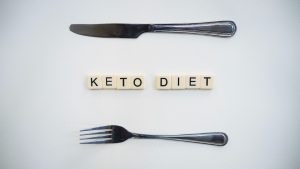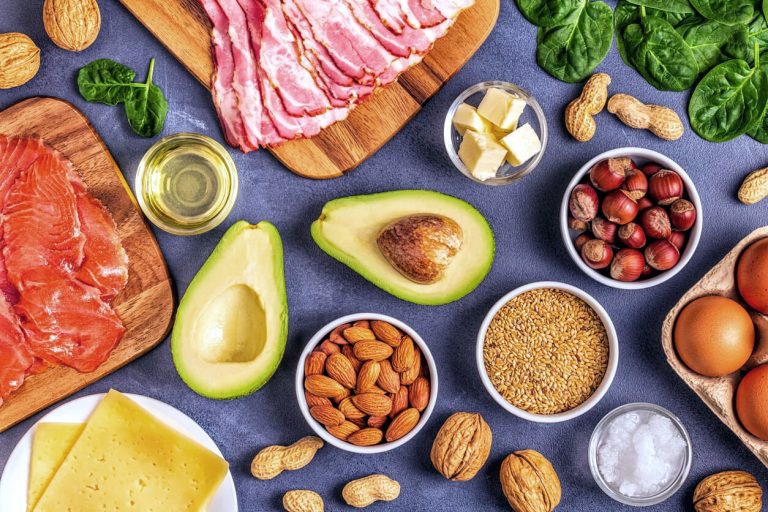Metabolic Confusion – Everything You Need To Know

Overview
The term “metabolic confusion” refers to making changes in your diet to make your body be more efficient and to prevent slowing or stagnation of the metabolic rate at rest (RMR).
The motivation behind the creation the diet of today is due to the differences observed between people in terms of metabolic rate, weight loss and the reaction of the body’s response to changes as well as physical activity.
Unfortunately this is due to a variety of factors out of our hands, such as gender, age, shape, the genetics of our body, as well as the past behavior.
This article we’ll be able to cover the essentials of metabolism, as well as how you can make your body think that it is burning more calories and boost the rate of metabolism at rest.
What is the connection to metabolism, weight loss and fat?
The rate at which we burn calories is a key factor in determining the amount of weight we shed and how fast we are able to do it.
For instance, many people have a friend who is never overweight regardless of the amount of food they consume.
However certain people eat salads but can’t seem to shed weight quickly. In a way it’s like they’re stuck with that weight!
Another example is people who fought hard to shed weight over months and then, when they stopped the diet and gained weight within a couple of weeks.
Each of these phenomena can be explained by knowing how your metabolism functions and how it relates to weight loss.
What is Metabolism?
Metabolism is the term used to describe the diverse biochemical reactions that take place in the body in order to store principal macronutrients and convert them into simpler types that provide energy (e.g. Adenosine triphosphate) to ensure that your organs are functioning.
This parameter combines two main subcategories:
- Anabolism is the synthesis of macronutrients
- Catabolism is the degrading of macronutrients
In general, metabolism is a process that is present in all living creatures. However, the pace of metabolism is different for individuals, due to a variety of factors, such as gender, age, body shape and type (e.g. the percentage of muscle mass) as well as the degree of exercise, diet and genetics.
The metabolic rate is what determines your body’s weight, as well as the rate of losing or gaining weight.
In order to lose weight effectively you must understand the role played by metabolism in the process, and know how you can confuse it to boost the process of lipolysis (fat break down).
The Major Factors That Influence Metabolic Rate
As we’ve mentioned there are a variety of elements that regulate the metabolic rate at rest that affect the metabolic rate at rest, such as:
Age
The aging process is a key aspect that determines the pace in RMR. As we age the effectiveness of our muscles diminishes due to our lifestyle of sedentary eating habits, diet, as well as the aging of our cells.
This explains why older people are more prone to weight gain.
Gender
Being male implies that your body is consuming more calories every day and this is the reason for the more metabolic rate that men have in comparison to women.
It is one of the unchangeable aspects that can be easily compensated by other healthier habits.
Body Composition
The proportion of lean muscles is a crucial aspect in metabolic rate because muscles require plenty of calories to remain functional.
In simple terms, the more powerful the muscles you’ve got, greater calories you’re likely to consume.
Degree of Physical Activity
This aspect is also related to the body’s composition.
When you keep energetic, your cells be conditioned to burn more calories every day and eventually increase RMR and lets you burn off calories while you sleep.
Diet
Diet is an important factor that can accelerate or decrease the rate of metabolism, based on the proportion of macronutrients that you’re taking in and the nutritional quality in your diet.
This is the primary element we can utilize to create an environment of metabolic confusion.
Genetics
Genetic material determines what we look like, who we are we appear, how long we’ll live to be, and much more. It shouldn’t be a surprise that genetics also decide the speed of your metabolism.
Like gender, this characteristic is not able to be altered, however other aspects (e.g. diet, for instance) can help compensate for the genetically slow metabolism.
Other aspects
Apart from the things mentioned previously, here are a few lesser-known lifestyle habits which regulate our metabolism.
Fast Weight Loss
Despite the sophistication that our brains possess, they may be deceived by routines, like rapid weight loss in order to alter our metabolism.
When you shed weight rapidly the body will assume that you’re in hunger, and you’re trapped in a cave that has one escape closed by hungry bears.
Whatever the images from this analogy, it’s an excellent way to describe how your body reacts to you shed weight over just a few days.
Therefore the bear will attempt to reduce RMR in order to preserve your energy for as long as it is possible until the bear has gone.
For us the result is that every effort to lose weight fast will be thwarted by our survival strategies.
Hormonal Disorders
Certain neuroendocrine disorders can alter the speed of your metabolism. This can be caused by slowing down the process of activating different biochemical pathways.
For example, Cushing’s syndrome and hypothyroidism are two well-known disorders of the endocrine system that cause significant weight gain because of fat synthesis (lipid storage) and a lower metabolic rate.
Environmental Temperature
This one is simple.
If you are in cold conditions and you are exposed to cold temperatures, your body will increase its energy consumption to maintain the body’s temperature and avoid hypothermia.
What is the Metabolic Confusion Diet?
To comprehend the confusion in metabolism diet, it is first necessary to comprehend the basic concepts of the caloric deficit.
Two parts which make up the caloric deficit equation:
Caloric Intake
This is a figure that can be measured by the calculation of your macronutrient ratio along with the amount of food you eat per day.
Each macronutrient is a distinct amount of calories. It all can be summarized as follows: consumption figures for calories:
- Carbohydrates (sugars) – 1 gram contains 4 calories
- Protein – 1 gram contains 4 calories
- Lipids (fats) – 1 gram contains 9 calories
Energy Expenditure
This is a reference into how much the energy (called calories) your body expends each day.
In general, the amount of calories you consume ranges between 1500-3000, based on the variables mentioned above.
Takeaway
Once you’ve mastered the two primary aspects that make up our model, it’s easy to follow the rules: burn more calories than you consume, and weight loss is inevitable.
Example:
A man aged 25 with these physical traits:
- Bodyweight 200 lbs. (90 kg)
- Height 6 feet. (1.85 centimeters)
If we measure the energy consumption in our case by using an online calculator We’ll discover that the person is burning around 2,324 calories a day.
If the person is looking to shed some weight, he needs to consume less calories daily than the above-mentioned number in order to force the body to eliminate the macronutrients that are stored (e.g. glycogen, glycogen, fat acids).
If you are able to burn an additional 700 calories, you’ll shed 1 kilogram (2 pounds) of weight.
How is the Metabolic Confusion Diet Different?
Instead of sustaining a low caloric intake over a long time frame to shed weight the metabolic confusion diet is focused on varying the amount of calories you consume on a weekly or daily basis.
So that, if you consume 2,324 calories on a Monday, you’ll be required to cut the amount on the next day in order to cause confusion in your metabolism.
The results of an earlier study conducted by researchers, they found that those who maintained their regular caloric intake three days per week but followed a caloric-restricted diet throughout the week, experienced significant weight loss when compared to a control group who adhered to a strict diet of calories.
The benefit of this research is that you don’t have to restrict your diet in order to shed weight. It is more important be aware that eating food items that are junk is not a good idea. They are loaded with artificial macronutrients (e.g. refined carbohydrates or hydrogenated fats) that are extremely difficult to process.
The Underlying Mechanism Behind the Metabolic Confusion Diet
The primary reason for metabolism confusion diets is the need to avoid the slowed down of RMR that happens when you begin eating a diet that is calorie-restricted.
If you shift between a low-calorie day and one with a lot of calories your metabolism is likely to get confused (hence the term “nomenclature”) that increases your rate and speeds up weight loss.
The Main Benefits of the Metabolic Confusion Diet
There are numerous benefits for following the metabolic confusion diet for example:
Weight Loss
The main reason to choose the diet known as metabolic confusion is shed weight without having to restrict yourself to a diet or eating salads on a daily basis.
As we’ve explained This pattern of eating boosts metabolism, allowing you to produce more calories each day. This means that you’ll lose your adipose tissue without doing anything.
Prevention of the Rebound Effect
People who lose weight quickly gain it back after only a few days.
In preventing the slowing of your metabolism and ensuring that your calories continue to be burned, even after you’ve stopped following the diet.
In the event of a catastrophe the worst-case scenario is that your RMR returns to its normal levels, which isn’t an issue in comparison to the drastic drop that you see in other caloric deficiency diets.
Reduction in Oxidative Stress and Inflammation
Dietary confusion decreases the amount of reactive oxygen species within the bloodstream. This reduces the chance of developing various diseases and enhances the symptoms and signs of the current ailment.
The basic mechanism is to get rid of adipose tissue since they are active in producing pro-inflammatory cytokines. This puts the body in an ongoing situation of inflammation.
Prevention of Toxins Buildup
The increased RMR will not be limited to energy-producing processes, but also other processes of metabolism will be speeded up.
As a result the kidneys and liver will get more efficient in getting rid of harmful substances and toxins.
Metabolic Confusion and Carbohydrates
Many people who are getting started on this metabolic diet have questions whether it’s safe to eat a high-carbohydrate diet or not.
Answering this query isn’t simple since eating sugars in your daily caloric intake will not lead to weight gain, but it can damage your body over the long run, particularly in the event that the source of those carbohydrates is not healthy.
Artificial sweeteners and refined sugars can be very toxic to your body and, therefore, must be abstained from.
They are not present in food items that are natural since they are manufactured artificially and your body isn’t equipped with the enzyme machinery needed to make them.
In the end, they can alter cell integrity, disrupt liver metabolism, and boost the amount in reactive oxygen species.
Furthermore refined carbs are also associated with huge rises of sugar, thereby increasing the chance of developing cellular resistance to insulin which is the most defining characteristic in Type 2 Diabetes.
As time passes the insulin level will cease to be effective, resulting in the constant rise in blood sugar level, which causes the typical signs of diabetes:
- Polyphagia (excessive hunger)
- Polydipsia (excessive thirst)
- Polyuria (excessive urine)
In the end, diabetes can lead to many serious issues that can be prevented by making healthy food choices and stick to the natural carbs.
To meet your daily needs of carbohydrates, select fruits, veggies and whole grains. All the and still maintain adequate quantities in proteins and fat consumption.
Takeaway Message
Dietary confusion program is a fantastic option to start your weight-loss journey without the need to eat a lot or suffer an effect of rebound. In order to reach your metabolic goals, you must first achieve the ultimate goal accompanied by the long-term effects on your body.
Many research papers and nutritionists support the positive impact of this type of diet on our health and wellbeing, as well as how it contributes to substantial reduction in fats and also weight reduction.
I hope this article has will help you understand the significance of your metabolism as well as the methods to manipulate it in your advantage.
If you are still having concerns about this diet for metabolic confusion, don’t hesitate to ask us via the comment section below.










